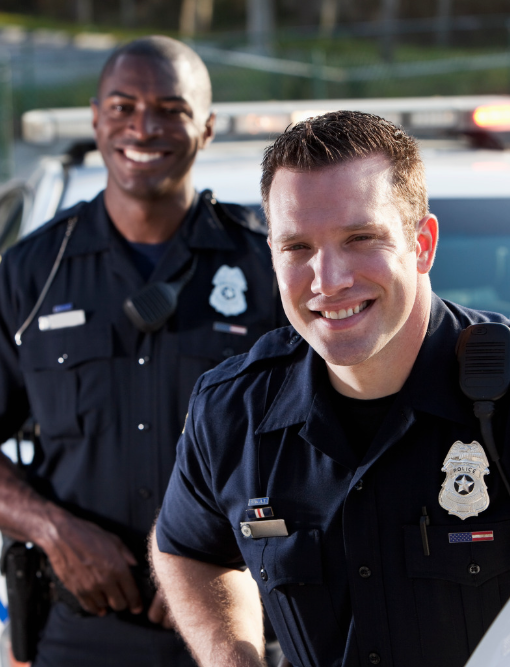The Imperative
According to a 2015-2017 Gallup poll, 54% of adults in the United States of America have “a great deal or quite a lot of confidence” in law enforcement. However, when this number is broken down by race, there is a stark difference in perception. The poll results indicate 61% of whites have “a great deal or quite a lot of confidence” in the police while 30% of blacks and 45% of people of Latin descent have “a great deal or quite a lot of confidence” in police. The following data also illustrates a need to address police and community relations: A recent study found in an analysis of officers reports that when civilians were compliant and no arrests were made, black civilians were about 21% more likely to experience some use of force in the interaction, including: being handcuffed or being pushed to the ground. Similarly, a report by the Center for Policing Equity of 12 police departments suggests that black civilians were subjected to more police use of force than white civilians after considering if the person arrested was for a violent crime.
While it is difficult to accurately measure people’s perceptions, it is clear there is room for improvement – across all races – as to how Americans view the police.
The Team and The Training
In 2015, during the aftermath of the Tamir Rice shooting in Cleveland, Ohio, several Chiefs of Police in the area began to seek assistance from local diversity professionals about strategies and tactics for improving their officers’ relationships with the communities they serve.
In response, the “Building Mutual Respect and Community Trust” police training program was developed by a diverse team of professionals in collaboration with local law enforcement. The goal of the training is to improve relationships between police and the communities they serve, while at the same time improving officer safety. This training received certification from the Ohio Peace Officer Training Academy (OPOTA), which falls under the purview of the Ohio Attorney General’s office.
Officers find value in trainings that are intellectually stimulating, focus on real-world job demands, allow for social interaction, and that are delivered efficiently (Oliva & Compton, 2009). Our trainers utilize an interactive agenda which engage participants on some of the following topics:
• Raising awareness of one’s own behavior
• Simple tips for building positive relationships
• Exploring “multiple realities” and dynamics of power in a two person system
• What it means to “slow down” and “work with the resistance”
Unique features of this training include generating dialogue with participants about their own experiences, and, facilitating participants through exercises about social situations in which implicit biases may play out. Here is a sample of some of the questions about social situations which generate critical discussions:
• Your best friend starts dating a Chinese-American
• A Saudi Arabian person sits down next to you on a crowded bus
• You find out a friend is choosing to be a stay-at-home dad
• A person of the same sex is flirting with you
• You don’t know whether to open the door for a person in a wheelchair
• An obese person is working out next to you at the gym
The point of verbalizing one’s reactions to these questions is to uncover biases that we all have, for and against various demographics. The reason this is done is to assure participants that “everyone has them”. And, in order to apply this “knowing” by slowing down and reviewing these questions within a discussion, an officer can understand his or her own biases and how that might apply to workplace situations.
Due to the nature of the design of this training, participants interact with each other, building relationships within the group, and the unique opportunity to learn from each other (and not just be lectured to by the trainers). Both of these methods are meant to raise officers’ awarenesses about their own thinking and behaviors. Another important element of this training is the focus on the dual relationship between police and the communities they serve, specifically including perspectives from the community, which are woven throughout the training.
Before the pilot training, a review session was held and facilitated by the design team, during which members of the following organizations had a chance to see an abbreviated version of the training and were able to provide their feedback in real time. This session included: the Urban League of Greater Cleveland, the American Civil Liberties Union, the Organization of Chinese Americans Cleveland Chapter, OpenNEO (a non-profit dedicated to making data publicly available and easily accessible), The LGBT Community Center of Greater Cleveland, and a faculty member from Case Western Reserve University who has an expertise in social work and health status of African American males. These community participants were led through an abbreviated version of the training and their response was very positive. They offered their thoughts and feedback, which were incorporated into the program prior to the first training offered to police officers.
Results
Building Mutual Respect and Community Trust has proven to be highly successful as demonstrated by the evaluations collected from almost 400 officers representing 23 police agencies from Ohio, Pennsylvania and Michigan.


One response to “New police training program aims to build community trust”
Hi, this is a comment.
To get started with moderating, editing, and deleting comments, please visit the Comments screen in the dashboard.
Commenter avatars come from Gravatar.